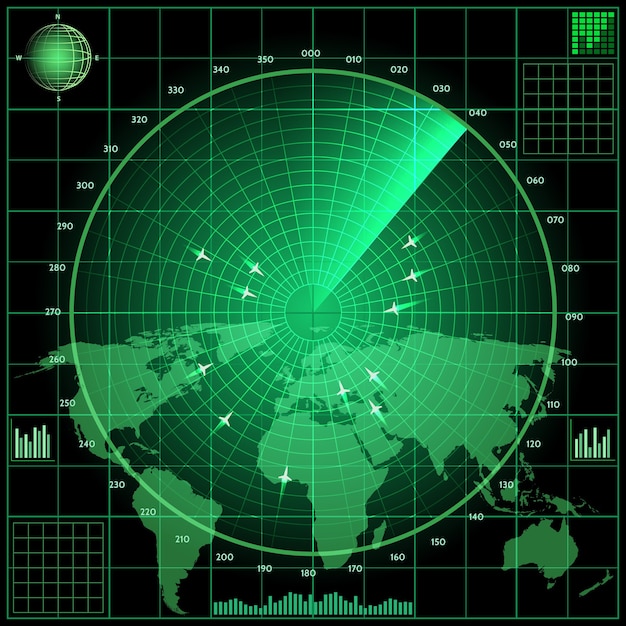The Philadelphia Experiment: Unveiling the Truth Behind the Myth

The Philadelphia Experiment, a controversial naval legend alleging a ship’s invisibility and teleportation, is debunked through historical analysis, scientific scrutiny, and examination of the origins of the story and the lack of verifiable evidence.
The legend of the Philadelphia Experiment has captivated imaginations for decades, weaving tales of a US Navy destroyer rendered invisible and teleported across vast distances. But what is the truth behind this enduring myth, 82 years later?
The Genesis of a Conspiracy: Unpacking the Philadelphia Experiment Story
The story of the Philadelphia Experiment centers around alleged events in October 1943, at the Philadelphia Naval Shipyard. The tale describes a naval destroyer escort, the USS Eldridge, being subjected to a secret experiment, the goal of which was to render the ship invisible to radar.
According to the narrative, the experiment went horribly wrong. Not only did the Eldridge become invisible, but it was also purportedly teleported hundreds of miles to Norfolk, Virginia, before reappearing back in Philadelphia. The crew members allegedly suffered severe physical and mental effects as a consequence. However, substantial evidence suggests that the story is rooted more in speculation and conjecture than in reality.
The Alleged Events of October 1943
The core of the Philadelphia Experiment narrative revolves around claims of invisibility and teleportation. It’s said that a generator was used to create a powerful electromagnetic field around the Eldridge. According to supporters of the story, this field caused the ship to disappear from sight and, in some versions, even teleport across space.
The rumors included that the ship traveled to Norfolk, Virginia, and that sailors were merged with the ship’s bulkheads, went insane, or dematerialized. The story gained further traction through the writings of individuals like Carlos Allende, who claimed to have witnessed the experiment firsthand in the 1950s.
- Carlos Allende’s Letters: Allende, or Carl Allen, corresponded with astronomer and UFOlogist Morris K. Jessup, detailing the supposed events.
- Crew’s Mental Trauma: Stories circulated about crew members with psychological damage due to the experiment.
- Invisibility to Radar: The initial goal was allegedly to make the USS Eldridge undetectable by radar, a common objective during WWII.

But many aspects of these stories do not line up logically or physically. From the inconsistencies in the alleged accounts to the outright lack of verifiable records, the foundation of this story is not as sturdy as its proponents claim.
Debunking the Myth: Examining the Flaws in the Philadelphia Experiment Story
Despite its enduring popularity, the Philadelphia Experiment story is riddled with inconsistencies and lacks credible evidence. Numerous investigations over the years have cast serious doubt on the events described, revealing contradictions and challenging the plausibility of the core claims.
These investigations have included naval researchers, science journalists, and skeptics who have scrutinized the historical record and the alleged testimony of witnesses. The findings have consistently pointed to discrepancies and fabrications, eroding the credibility of the narrative.
Naval Logs and Official Records
Official US Navy logs, ship records, and historical archives provide no evidence to support the teleportation or invisibility claims. The USS Eldridge was commissioned in August 1943 and spent its entire service in the Atlantic and Mediterranean, not undergoing bizarre scientific experiments in a Philadelphia shipyard.
These types of records are important for establishing a chain of events. However, in this case, the absence of supporting materials underscores the story’s lack of factual basis. The alleged teleportation to Norfolk is also challenged by the Eldridge’s documented location during the relevant time period.
Scientific Implausibility
Many physicists and engineers have dismissed the scientific basis of the Philadelphia Experiment’s claims, stating that the idea of rendering a ship invisible using electromagnetic fields is far beyond the capabilities of 1940s technology. Also, if teleportation were possible, the energy requirements would be astronomical.
Not only would the energy input be substantial, but the effects on the ship’s crew would be even more detrimental. The story fails to explain how the crew could survive such a dramatic shift in space-time without significant consequences.

The Human Factor: Understanding the Role of Carl Allen
A significant portion of the Philadelphia Experiment narrative can be traced back to the account of one individual: Carl Allen, also known as Carlos Allende. His letters to Morris K. Jessup provided some of the most vivid details of the alleged events, but they have also been questioned for their accuracy and credibility.
The letters described the experiment in a mysterious and sensational manner, mentioning bizarre occurrences and the psychological effects on the crew. However, Allen’s background and lack of verifiable evidence have led many to consider his account unreliable.
- Dubious Background: Allen was known for his eccentric personality and fascination with fringe topics.
- Inconsistent Details: Different versions of his account contain discrepancies, undermining their credibility.
- Lack of Corroboration: No independent witnesses or physical evidence to support his story.
Allen’s personal history is marked by a series of unsubstantiated claims and an affinity for conspiracy theories. This makes it difficult to lend credence to his testimony when it clashes so dramatically with the historical record.
Project Rainbow: Separating Fact From Fiction
The Philadelphia Experiment is often associated with a supposed wartime research program called “Project Rainbow.” However, there is no official documentation or evidence to support the existence of such a project. This alleged project has been tied to experiments involving invisibility and advanced technologies, fueling further speculation and conspiracy.
Although the US Navy conducted numerous research projects during World War II, there is no credible evidence to link any of them to rendering ships invisible or teleporting them across vast distances.
Wartime Research and Technological Advancements
During World War II, the US Navy invested heavily in scientific research and development to gain a strategic advantage. While some projects may have aimed to improve radar technology or develop countermeasures, there is no indication that invisibility was a realistic goal.
Rather, the focus was on advancements, using radar to detect enemy ships. While stealth technology is a reality today, the technology simply was not available in the 1940s.
The Enduring Appeal: Why the Myth Persists
Despite being widely debunked, the Philadelphia Experiment continues to capture the public imagination. The story’s enduring appeal lies in its blend of science fiction, conspiracy theories, and historical ambiguity. The narrative offers a tantalizing glimpse into a world where secret government experiments push the boundaries of science and technology.
The story also taps into a deep-seated distrust of authority and a fascination with the unknown. In an era marked by rapid technological advancements and government secrecy, the Philadelphia Experiment serves as a cautionary tale about the potential dangers of unchecked scientific progress.
- Science Fiction Elements: The story incorporates elements of science fiction, such as invisibility and teleportation, that appeal to a broad audience.
- Conspiracy Theories: The Philadelphia Experiment is often linked to broader conspiracy theories involving secret government projects and suppressed technologies.
- Historical Ambiguity: The story’s origins in anecdotal accounts and unsubstantiated claims create an air of mystery and intrigue.
The Power of Storytelling and Misinformation
The Philadelphia Experiment’s lasting appeal illuminates the powerful role storytelling plays in shaping our perceptions of reality. Even in the absence of verifiable evidence, a compelling narrative can take root in the public consciousness, influencing beliefs and attitudes. The story also shows how misinformation can spread and endure, particularly when it aligns with pre-existing biases or anxieties.
The phenomenon extends to other myths as well, showing our attraction to tall tales and conspiracy theories. The more we have in question, the more curious we tend to get.
| Key Point | Brief Description |
|---|---|
| ⚓ Origin of Myth | Rooted in alleged events in 1943 involving the USS Eldridge. |
| 🔬 Scientific Basis | Claims of invisibility via electromagnetic fields are implausible with 1940s technology. |
| 📜 Official Records | Naval logs lack evidence supporting the alleged events. |
| 🗣️ Key Figure | Carlos Allende’s unverified accounts are central to the narrative but are doubted. |
Frequently Asked Questions
▼
The Philadelphia Experiment is a naval legend in which the USS Eldridge was made invisible and teleported in 1943. Although popular, the tale lacks evidence. Most consider it a conspiracy theory.
▼
No, numerous investigations have found no credible evidence of the events described in the story. Official naval records do not coincide with the experiment’s claims.
▼
Carl Allen, also known as Carlos Allende, claimed to witness the experiment and corresponded with Morris K. Jessup. Many consider his account unreliable due to inconsistencies and a lack of corroboration.
▼
Most physicists find the idea of rendering a ship invisible using electromagnetic fields far beyond the capabilities of 1940s technology. Teleportation too would require astronomical energy.
▼
The legend combines science fiction, conspiracy traits, and historical ambiguity, appealing to the many and tapping into distrust of authority and fascination with mysteries.
Conclusion
The **Philadelphia Experiment** remains a captivating myth, fueled by speculation and storytelling. While it has captured imaginations worldwide, there is no credible evidence to support the claims of invisibility and teleportation. Though intriguing, sound analysis reveals it as a product of misinformation and imaginative narrative.